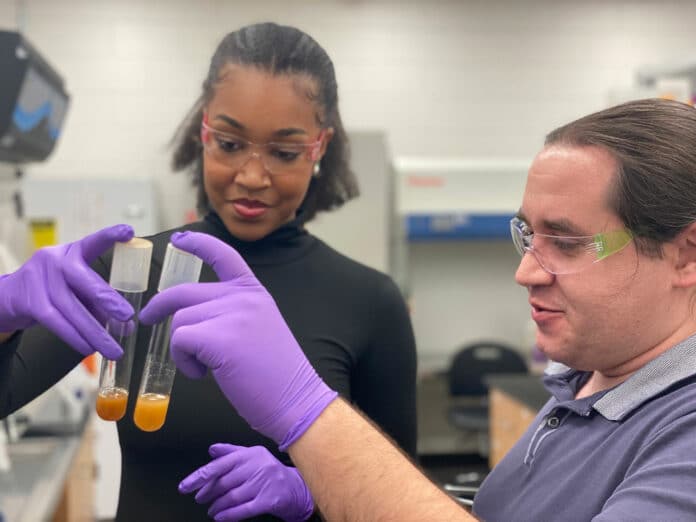Yeast is an organism’s content that can convert carbohydrates into products such as bread and beer through fermentation in the absence of light. Light exposure can interfere with or ruin this process in some cases. This is why yeast is often kept in dark places when used for these purposes.
Researchers in Georgia Tech’s School of Biological Sciences have engineered one of the world’s first yeast cells able to harness energy from light, expanding our understanding of the evolution of this trait and paving the way for advancements in biofuel production and cellular aging.
“We were frankly shocked by how simple it was to turn the yeast into phototrophs (organisms that can harness and use energy from light),” says Anthony Burnetti, a research scientist working in Associate Professor William Ratcliff’s laboratory and corresponding author of the study. “All we needed to do was move a single gene, and they grew 2% faster in the light than in the dark. Without any fine-tuning or careful coaxing, it just worked.”
Easily equipping yeast with an evolutionarily important trait could be a major breakthrough in our understanding of how certain traits originated and how they can be used in various applications, such as biofuel production, evolution, and cellular aging.
This research was inspired by the group’s previous work on the evolution of multicellular life, particularly their experiments with snowflake yeast. The research uncovers how their single-celled model organism, “snowflake yeast,” was able to evolve multicellularity over 3,000 generations. One major limitation for multicellular evolution appeared throughout these evolution experiments: energy.
“Oxygen has a hard time diffusing deep into tissues, and you get tissues without the ability to get energy as a result,” says Burnetti. “I was looking for ways to get around this oxygen-based energy limitation.”
One way to give organisms an energy boost without using oxygen is through light. However, the ability to turn light into usable energy can be complicated from an evolutionary standpoint.
Although plants are known for their ability to use light for energy, it’s not always easy to transfer this ability to other organisms. This is because the process involves a complex set of genes and proteins that are difficult to synthesize and transfer.
A simpler way for organisms to use light is with rhodopsins, proteins that can convert light into energy without additional cellular machinery.
“Rhodopsins are found all over the tree of life and apparently are acquired by organisms obtaining genes from each other over evolutionary time,” says Autumn Peterson, a biology Ph.D. student working with Ratcliff and lead author of the study.
This type of genetic exchange is fascinating and is called horizontal gene transfer. It involves the sharing of genetic information between organisms that are not closely related. Horizontal gene transfer can cause seemingly significant evolutionary changes in a short time span. For example, bacteria are able to quickly develop resistance to certain antibiotics. This type of genetic transfer can occur with all sorts of genetic information, and rhodopsin proteins are particularly susceptible to it.
“In the process of figuring out a way to get rhodopsins into multi-celled yeast,” explains Burnetti, “we found we could learn about the horizontal transfer of rhodopsins that has occurred across evolution in the past by transferring it into regular, single-celled yeast where it has never been before.”
Scientists wanted to test if they could make a single-celled organism use solar energy with rhodopsin, a protein that can capture light. They took a rhodopsin gene from a harmful fungus and put it into ordinary yeast. The gene made the yeast produce rhodopsin in their vacuole, a part of the cell that can use proteins like rhodopsin to make energy from chemical differences. The yeast with vacuolar rhodopsin grew about 2% faster when exposed to light, which is a big advantage for survival.
This simplicity provides key evolutionary insights and says a lot about “the ease with which rhodopsins have been able to spread across so many lineages and why that may be so,” explains Peterson.
To investigate this, researchers are collaborating to study how rhodopsins could potentially reduce aging effects in yeast. Solar-powered yeast is also being utilized by other scientists to improve bioproduction, such as synthesizing biofuels. However, Ratcliff and his team are primarily interested in examining how this added benefit could affect the yeast’s transition from a single-celled organism to a multicellular one.
“We have this beautiful model system of simple multicellularity,” says Burnetti, referring to the long-running Multicellularity Long-Term Evolution Experiment (MuLTEE). “We want to give it phototrophy and see how it changes its evolution.”
